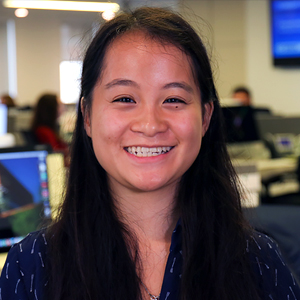WASHINGTON – A congressional attempt to salvage a foundering student loan forgiveness program was only marginally better, with just 4% of Arizona applications approved in the second round – and that was four times better than the national rate.
The Government Accountability Office reported this month the same confusing guidelines and lack of communication in the $700 million Temporary Extended Public Service Loan Forgiveness program as in the original Public Service Loan Forgiveness program it was supposed to fix.
At the current rate of approval, the GAO said “it could be years before the $700 million appropriation is exhausted,” which is why the program needs to be addressed now.
It also needs to be addressed so the program can begin fulfilling its original goal of letting people in public-service jobs “obtain debt forgiveness that they deserve,” said Melissa Emrey-Arras, the GAO’s director of education workforce and income security issues.
“Very little of the budget – 4% of the $700 million from Congress – has been applied to borrowers seeking loan forgiveness,” Emrey-Arras said.
The Public Service Loan Forgiveness program was created in 2008 for people who went into service careers, such as teachers, nurses or public defenders, and still had college debt 10 years later. In order to qualify, the borrower would have had to make regular, monthly payments on their loans for the 10 years while working “in certain public service,” government or nonprofit jobs, according to the GAO’s website.
The Education Department told the GAO that when the loan forgiveness program was first created, “it was clear then that relatively few borrowers would benefit from the program” because of various regulations and requirements. But the approval rate in 2018, the first year people could apply to have their loans paid off under the program, was dismal.
With confusing instructions, challenging requirements for supporting documentation and little outreach, the Department of Education wound up approving just 891 of the 100,319 applications received in the first year.
In Arizona, the approval rate was about the same, just 16 out of 1,701 applications, according to data from the Education Department.
That’s when Congress stepped in and created the Temporary Expanded Public Service Loan Forgiveness Program, budgeting $700 million on a first-come, first-served basis for those who had been turned down in the first round of the program.
It has not been a resounding success. The GAO said that there were 54,184 applications nationwide from May 2018 to May 2019, and just 661, or about 1%, had been approved.
The most recent Education department numbers available for Arizona show that 10 applications had been approved in the state through the end of March out of the 271 applications received by then.
The new program had some successes, paying out $26.9 million in loan forgiveness, according to the GAO report. It said loan forgiveness amounts ranged from “about $190 to about $227,000,” with an average of $41,000.
The GAO said the application is a “confusing, multistep process.” Applicants who were rejected in the first round could apply to the second, but Emrey-Arras said many of them were denied because they did not submit their original Public Service Loan Forgiveness application.
Betsy Mayotte, the president of nonprofit Institute of Student Loan Advisors, said borrowers should not “freak out” about the apparent long odds of winning loan forgiveness.
“These programs are absolutely retainable,” she said. “All of these people denied by the PSLF can apply tomorrow” to the Temporary Expanded Public Service Loan Forgiveness Program.
Mayotte acknowledged that the Department of Education was given a “very limited time frame” to develop the temporary program, but she still criticized the lack of communication about both programs.
The report said many loan sites or help tools do not advertise or explain TEPSLF. Emrey-Arras said only 1 in 9 loan services that work with the education department advertised the program, and only because that service dealt exclusively with TEPSLF.
The GAO report recommended making the application easier for students – such as including an option to enter the TEPSLF program on the original PSLF application – and requiring that loan servicers provide information on their sites, and making information more accessible.
Student loan debt in Arizona averaged $23,748 in 2018, seventh-lowest among states, according to the consumer site LendEDU. But Mayotte said struggling with student loan debt is not simply a problem for current and recent students.
“Many people assume it’s a young person’s issue,” she said, but she noted that older borrowers have the “least amount of time” to pay off their debts, while people in their 20s have their whole career to figure out what to do.
Mayotte said that in her experience, half of student loan borrowers are older than 30, a quarter are older than 45, and the fastest-growing group are those 65 and older.
Emrey-Arras said that overall, communication about loan forgiveness programs is key.
“Our stance is that the Department of Education needs to do a better job of expanding program information so people can be aware,” she said. “I also advise people to apply because funds are limited, and you can miss out on the opportunity.”

